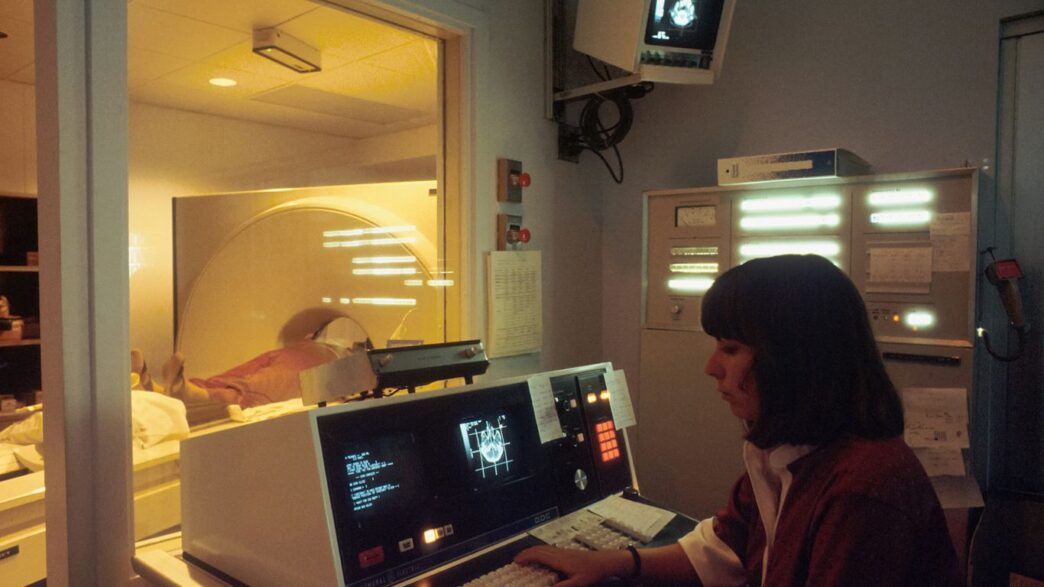Thinking about moving your healthcare data to the cloud? It’s a big step, and honestly, it can feel a little overwhelming at first. We’ve all heard stories, both good and bad, about cloud storage in healthcare. This article breaks down what you really need to know, from getting started to what’s coming next. We’ll cover how to plan it out, keep things secure, manage the costs, and even how it can help doctors and nurses do their jobs better. Let’s figure out this cloud thing together.
Key Takeaways
- Before you move anything to the cloud for healthcare, you need a solid plan. Figure out what you have, what you need, and how it all fits together. This means looking at your current systems and deciding what goes where.
- Keeping patient information safe and following all the rules is non-negotiable. Make sure your cloud setup meets all security standards and healthcare regulations. Think about encryption and who gets access.
- Moving to the cloud isn’t just about technology; it’s about people too. Training your staff and helping them get used to new tools is super important for a smooth switch. Address any worries they might have.
- The cloud can save money, but you have to watch how you use it. Pay attention to what resources you’re using and adjust as needed. This helps keep costs down and makes sure you’re not paying for things you don’t need.
- The future of cloud storage in healthcare looks bright, with AI and big data playing bigger roles. Expect more tools that help doctors work together and share information easily, making patient care better.
Foundational Elements For Cloud Storage In Healthcare

Getting cloud storage set up for healthcare isn’t just a matter of picking a provider and uploading files. It requires a solid plan from the start. You really need to think about what you want to achieve and what you’re working with right now. This initial planning phase is where you lay the groundwork for everything that follows. Without it, you might end up with a system that doesn’t quite fit your needs or causes more headaches than it solves.
Comprehensive Planning And Assessment
Before you even think about migrating data, take a good, hard look at your current situation. What kind of data do you have? How much of it is there? Where is it stored now? What are your long-term goals for using cloud storage? Are you looking to improve access for doctors, enable remote patient monitoring, or just reduce your on-premise hardware footprint? Understanding these details helps you choose the right cloud services and avoid overspending or underspending. It’s also a good time to assess your network infrastructure – can it handle the increased traffic that cloud storage often brings? Sometimes, you might need to upgrade your network to make sure everything runs smoothly.
Prioritizing Security And Compliance
This is non-negotiable in healthcare. Patient data is incredibly sensitive, and there are strict rules about how it’s handled. You absolutely must partner with cloud providers who understand and adhere to regulations like HIPAA. This means looking at their security measures, like encryption for data both when it’s stored and when it’s being sent. It’s not just about the provider, though; you also have a role to play in how you configure and manage access to the data. Making sure your cloud setup is compliant with HIPAA compliance in the cloud is a big part of this. You’ll want to have clear policies on who can access what information and when.
Ensuring Seamless Integration With Existing Systems
Most healthcare organizations aren’t starting from scratch. You likely have existing electronic health record (EHR) systems, billing software, and other applications that need to talk to your new cloud storage. Trying to force a new system onto old infrastructure can be a recipe for disaster. Look for cloud solutions that offer flexible integration options. This might involve using middleware or specific connectors to bridge the gap between your legacy systems and the cloud. The goal is to make sure that data can flow easily and accurately between all your systems without manual workarounds, which can lead to errors. You want your new cloud storage to work with your existing tools, not against them.
Establishing Clear Governance And Oversight
Once the cloud storage is in place, you need a plan for how it will be managed. Who is responsible for what? How will you monitor usage and costs? What happens if there’s a security incident? Establishing clear governance means defining roles and responsibilities for managing the cloud environment, setting policies for data access and retention, and putting procedures in place for regular audits and reviews. This oversight is key to maintaining security, compliance, and operational efficiency over the long term. It’s about making sure the system continues to serve its purpose effectively and safely.
Navigating The Financial Landscape Of Cloud Adoption
Moving your healthcare organization’s data to the cloud isn’t just about better tech; it’s also a big financial decision. You’ve got to figure out what it’s all going to cost and how to make sure you’re not overspending. It’s not as simple as just signing up for a service.
Understanding The Cloud Cost Structure
Cloud services usually work on a pay-as-you-go basis. This sounds good because you’re not buying a ton of expensive equipment upfront like you would with old-school servers. But, you really need to know how the billing works. What happens when you move a lot of data? Are there extra charges for using certain features? It’s important to get a clear picture of all potential costs before you commit. You don’t want any surprises showing up on your bill later.
Here’s a quick look at how cloud costs can differ from traditional setups:
| Factor | Traditional Computing | Cloud Computing |
|---|---|---|
| Initial Investment | High (hardware, setup) | Low (pay-as-you-go) |
| Scaling Costs | Expensive (buy more hardware) | Cost-effective (add resources as needed) |
| Resource Management | High overhead (IT staff, maintenance) | Lower overhead (provider handles much of it) |
| Predictability | Can be hard to predict needs, leading to waste | Easier to adjust based on actual usage |
Optimizing Resource Utilization For Savings
Just because you can use a lot of cloud resources doesn’t mean you should. To save money, you need to keep an eye on what you’re actually using. Think of it like your electricity bill – you don’t leave all the lights on if nobody’s in the room. You can set up systems to automatically adjust the resources you’re using. If demand drops, the system scales back, and you pay less. If demand spikes, it scales up, but only when needed. This smart use of resources is key to keeping costs down.
- Regularly check your cloud usage reports.
- Identify and shut down any unused or underused services.
- Automate scaling processes to match demand.
- Consider reserved instances for predictable workloads to get discounts.
Achieving Operational Efficiencies Through Cloud
When you use cloud services smartly, they can actually make your day-to-day operations run much smoother. Think about tasks that used to take a lot of manual work. Cloud tools can often automate these, freeing up your staff to focus on patient care instead of paperwork. Better access to information and easier collaboration between departments can also speed things up. While these aren’t direct cost savings like cutting a bill, they translate into real efficiency gains that benefit the whole organization.
Enhancing Patient Care With Advanced Cloud Capabilities
So, how does the cloud actually help make things better for patients? It’s not just about storing files, you know. Think about all the information a doctor or nurse needs – test results, history, notes from other specialists. The cloud makes all of that way more accessible, which means quicker decisions and, hopefully, better care.
Leveraging Artificial Intelligence and Machine Learning
This is where things get really interesting. AI and ML, when they’re running on cloud systems, can sift through huge amounts of patient data. They can spot patterns that a human might miss. For example, they can help predict if someone is at risk for a certain condition before it even shows up. This means doctors can step in early.
- Predictive Analytics: Spotting potential health issues before they become serious.
- Personalized Treatments: Tailoring care plans based on an individual’s unique health profile.
- Automating Tasks: Freeing up medical staff from repetitive jobs so they can focus more on patients.
Harnessing the Power of Big Data Analytics
Healthcare generates a ton of data every single day. We’re talking about everything from patient records to research findings. The cloud gives us the muscle to actually do something with all that information. Instead of just sitting there, the data can be analyzed to find out what treatments work best, where resources are needed most, and how to improve hospital operations.
| Data Source | Potential Insight |
|---|---|
| Electronic Health Records | Identifying patient populations at high risk |
| Wearable Devices | Real-time health trend monitoring |
| Genomic Data | Developing targeted therapies |
Facilitating Telemedicine and Remote Monitoring
Remember when seeing a doctor meant a trip to the clinic, no matter what? The cloud is changing that. It’s the backbone for telemedicine, letting patients connect with their doctors from home. Plus, with remote monitoring tools, doctors can keep an eye on patients with chronic conditions without them needing to be in the hospital. This is a big deal for people who live far away or have trouble getting around. It puts more control and convenience directly into the patient’s hands.
Ensuring Robust Security And Regulatory Adherence
Implementing Advanced Security Protocols
When you move patient data to the cloud, security has to be top of mind. It’s not just about keeping things safe; it’s about following a whole bunch of rules. Think of it like this: your cloud provider is like the landlord of a building, and you’re the tenant. The landlord has to keep the building structurally sound, but you, the tenant, have to make sure your apartment is locked up tight and you don’t let just anyone in. This is called a shared responsibility model, and it’s super important.
We need to use strong encryption, both for data when it’s sitting still (at rest) and when it’s moving around (in transit). Access controls are also a big deal. Who gets to see what? We need to set up systems so only the right people can access the right information. Regular checks, like security audits, are also a good idea to catch any potential problems before they become big issues. It’s a lot of layers, but that’s what keeps sensitive health information protected.
Ensuring Compliance With Healthcare Regulations
Healthcare is a minefield of regulations, and for good reason. Patient privacy is a huge deal. Depending on where you are, there are different laws like HIPAA in the US or PHIPA in Canada. These laws dictate how patient information can be collected, used, and shared. When you use cloud services, you can’t just assume they’re compliant. You have to actively check.
- Choose providers that understand healthcare rules. Look for cloud services that specifically state they meet standards like HIPAA. They should have documentation to back this up.
- Understand the data flow. Know exactly where your data is going and how it’s being handled by the cloud provider.
- Have agreements in place. Make sure your contracts with cloud providers clearly outline their responsibilities regarding compliance and data protection.
It’s a constant effort to stay on the right side of these rules, and it requires careful attention to detail.
Prioritizing Cybersecurity And Data Privacy
Beyond just following the rules, we need to think about actual cybersecurity threats. Hackers are always looking for ways in, and a data breach in healthcare can be devastating, not just for the patients but for the hospital or clinic too. So, we need to be proactive.
- Regularly update security software. This includes firewalls, antivirus, and intrusion detection systems.
- Train your staff. A lot of security issues happen because of human error. Make sure everyone knows how to spot phishing emails and follow good security practices.
- Have a plan for breaches. What happens if the worst occurs? You need a clear, tested plan for how to respond, notify affected parties, and recover.
Data privacy isn’t just about regulations; it’s about building trust with patients. They need to know their most personal information is safe with you, no matter where it’s stored.
Managing The Transition To Cloud Storage In Healthcare

Moving your healthcare organization to cloud storage isn’t just about flipping a switch. It’s a big shift, and like any big change, it needs a solid plan to work out well. Think of it like renovating your house – you wouldn’t just start tearing down walls, right? You need to figure out what you want, what needs to stay, and how to make sure everything works together when it’s done.
Managing Change and Training Staff
Let’s be real, people don’t always love new things, especially when it comes to their jobs. Your staff might be used to the old way of doing things, and that’s okay. The key here is communication and support. You need to explain why this move is happening and how it will actually make their jobs easier, not harder. Think about:
- Clear communication channels: Set up regular updates and Q&A sessions so everyone feels heard.
- Hands-on training: Don’t just hand out manuals. Get people comfortable with the new systems through practice.
- Identifying champions: Find a few tech-savvy folks who can help their colleagues and be go-to people for questions.
The goal is to make everyone feel confident and capable with the new tools.
Addressing Resistance to New Technologies
Resistance can pop up for all sorts of reasons. Maybe people worry about job security, or they’re just overwhelmed by the learning curve. It’s important to acknowledge these concerns. Sometimes, it’s about showing them the benefits directly. For example, if cloud storage means faster access to patient records during an emergency, that’s a tangible win. You might also find that some resistance comes from a lack of understanding about how the data is protected. Reassuring them about the security measures in place can go a long way.
Ensuring Data Portability and Exit Strategies
This is a big one that often gets overlooked until it’s too late. What happens if you need to switch cloud providers down the line? Or, in a less likely scenario, what if you need to bring everything back in-house? You need a clear plan for this. This means:
- Understanding your contract: Know the terms regarding data access and retrieval.
- Regular data backups: Make sure you have copies of your data that are independent of the cloud provider.
- Testing the process: Periodically, try moving a small amount of data to ensure the process works as expected.
Having a solid exit strategy means you’re always in control of your data, no matter what the future holds.
Future Trends Shaping Cloud Storage In Healthcare
Looking ahead, the way healthcare organizations use cloud storage is set to change quite a bit. It’s not just about stashing files anymore; it’s about making them work harder for us. The cloud is becoming a central hub for innovation in patient care and operational efficiency.
The Evolving Role of AI and ML
Artificial intelligence (AI) and machine learning (ML) are really starting to make waves. Think about using these tools to spot health risks before they become big problems. By sifting through tons of patient data, AI can help doctors create more personalized treatment plans, considering everything from genetics to lifestyle. It can also take over some of the more repetitive administrative tasks, giving medical staff more time to focus on patients. This kind of smart data analysis is only possible with the massive processing power the cloud provides. It’s a big step up from just storing records; it’s about making those records actively useful.
The Growing Importance of Big Data
Healthcare generates an unbelievable amount of data every single day. Cloud storage gives us the space and the tools to handle all of it. We can analyze this information to find patterns that lead to better treatments and smoother operations. For example, researchers can use cloud platforms to store and process study data, speeding up medical discoveries. It’s like having a super-powered microscope for medical information. This ability to handle and make sense of large datasets is key for future medical advancements.
Fostering Collaboration and Interoperability
Another big shift is how the cloud helps different parts of the healthcare system talk to each other. It breaks down the walls between departments and even different hospitals. Doctors can get secure access to patient information from wherever they are, which means better-informed decisions. Cloud-based tools also make it easier for care teams to work together, no matter their location. This improved communication is vital for making sure patients get the best possible care without any gaps. The push for systems that can easily share information, known as interoperability, is a major focus, and the cloud is the backbone for making that happen. You can find more on how cloud computing is changing healthcare by looking at cloud computing in healthcare.
Here are some key areas where these trends are making a difference:
- Predictive Analytics: Identifying potential patient health issues early.
- Personalized Medicine: Tailoring treatments to individual patient needs.
- Streamlined Research: Accelerating medical studies through data analysis.
- Remote Care: Supporting telemedicine and patient monitoring from afar.
Looking Ahead
So, we’ve talked a lot about cloud storage in healthcare. It’s not exactly a walk in the park to get it set up right, and yeah, there are definitely some risks involved. But honestly, the tech is getting better all the time, making things more reliable and secure. When you weigh it all up, the good stuff about keeping patient and medical records in the cloud seems to win out over the potential downsides. Just make sure you get some help from the pros and do your homework when picking a cloud provider. It’s a big step, but it looks like the way forward for better healthcare.
Frequently Asked Questions
Why is planning so important before moving healthcare data to the cloud?
Thinking things through first is super important. It’s like making a map before a big trip. You need to figure out what information you have, what you need to protect, and how the cloud will help your hospital or clinic work better. This planning helps make sure everything goes smoothly and safely.
How does the cloud keep patient information safe and follow the rules?
Cloud companies use special locks, like secret codes (encryption), to protect patient data. They also have strict rules to follow, like HIPAA, to make sure your information stays private. Think of it like a super secure vault that only authorized people can open.
Is it hard to connect the cloud to the computer systems we already use?
It can be tricky, but good cloud systems are built to connect with your current tools. It’s like plugging in a new game console to your TV – you want it to work right away. Making sure these systems talk to each other keeps things running smoothly without causing problems.
Who is in charge of making sure the cloud is used correctly in a hospital?
There needs to be a clear team or person in charge, like a captain of a ship. They make the rules for how the cloud is used, watch over it, and make sure it’s helping the hospital achieve its goals. This keeps everything organized and on track.
What happens if we want to switch cloud providers or stop using the cloud later?
It’s smart to have a plan for this, like having a backup plan for a rainy day. You need to know how to take your data with you if you decide to move it somewhere else. This makes sure you’re always in control of your important information.
How does the cloud help doctors and nurses take better care of patients?
The cloud can help in many ways! It can store lots of patient information so doctors can see it easily, even from far away. It also helps with new tools like AI that can help find sickness early or suggest the best treatment. Plus, it makes it easier for doctors to work together, which means better care for you.














